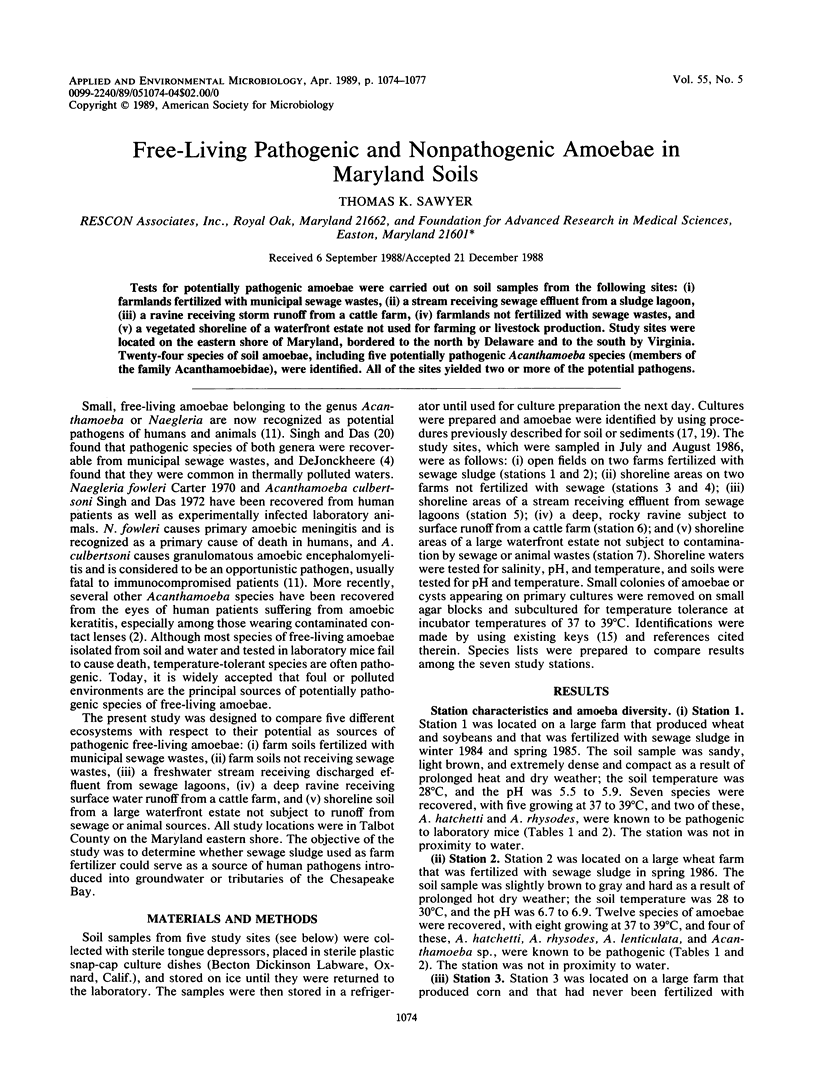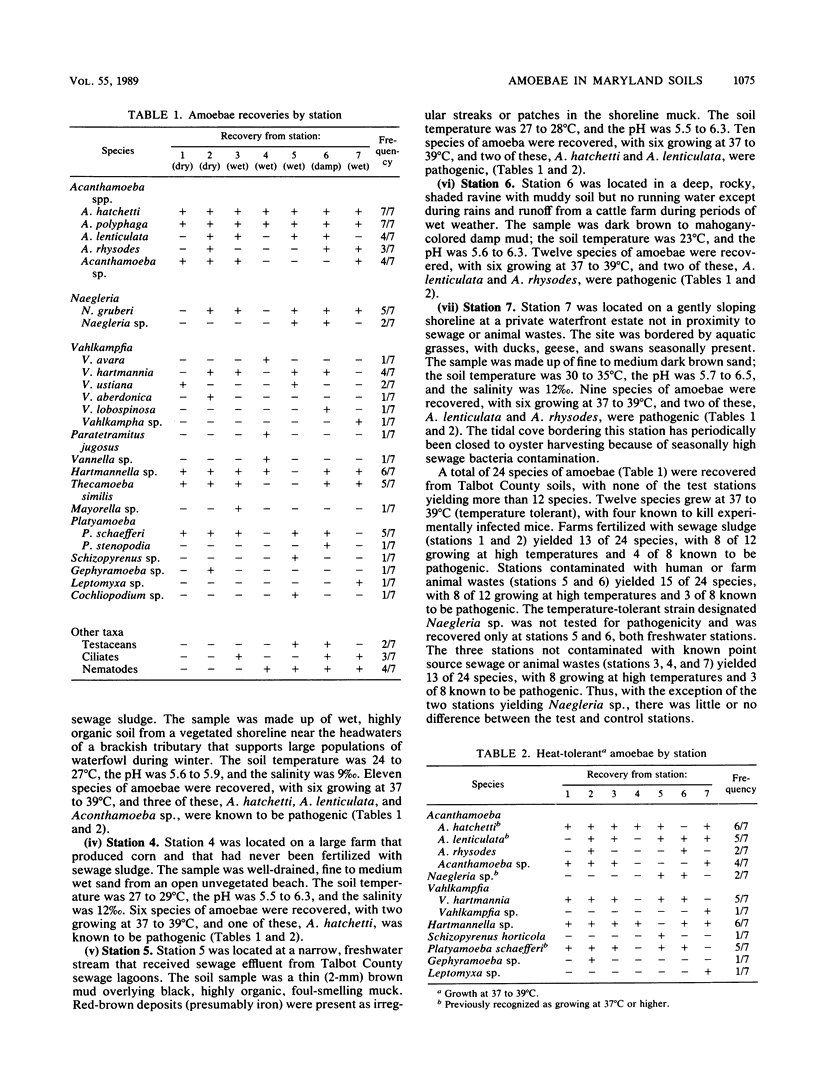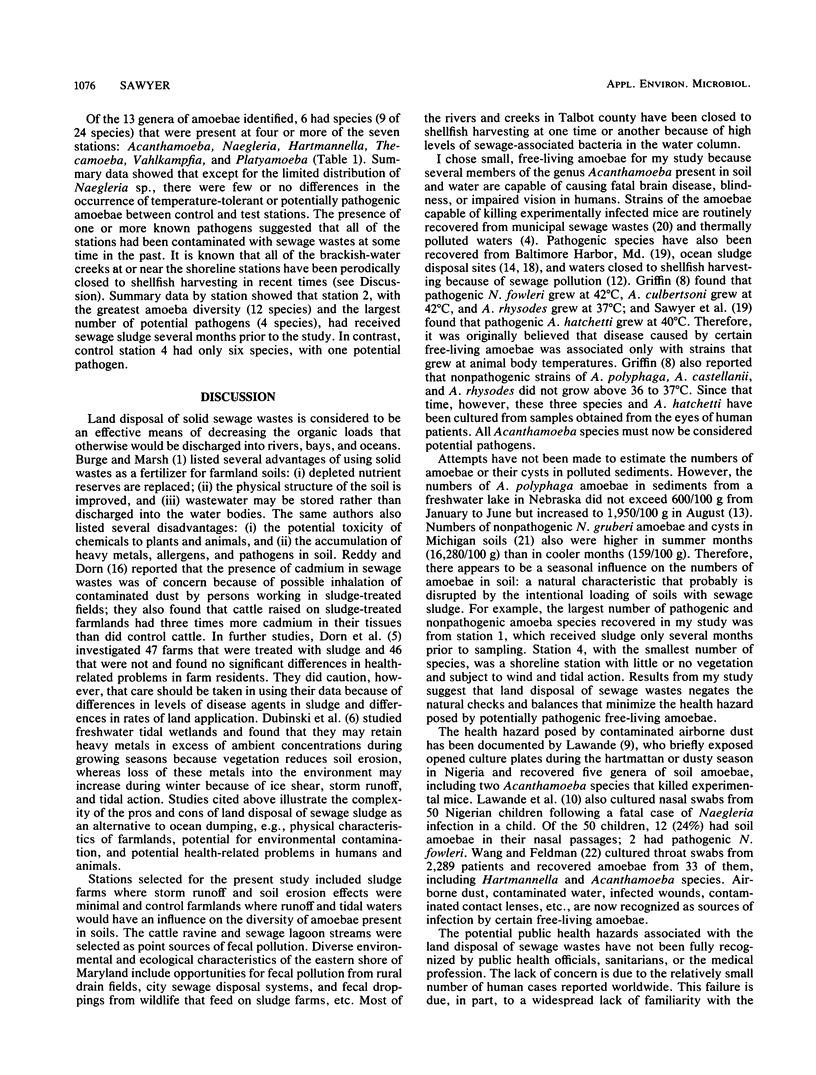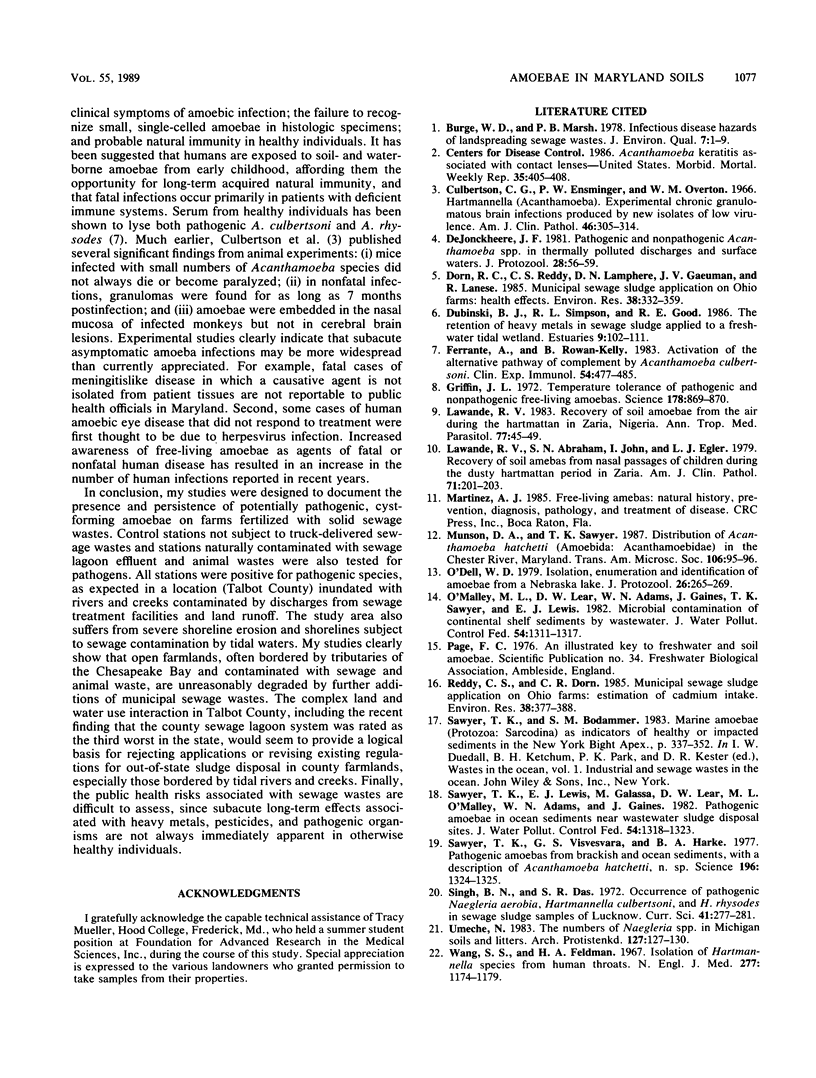Abstract
Tests for potentially pathogenic amoebae were carried out on soil samples from the following sites: (i) farmlands fertilized with municipal sewage wastes, (ii) a stream receiving sewage effluent from a sludge lagoon, (iii) a ravine receiving storm runoff from a cattle farm, (iv) farmlands not fertilized with sewage wastes, and (v) a vegetated shoreline of a waterfront estate not used for farming or livestock production. Study sites were located on the eastern shore of Maryland, bordered to the north by Delaware and to the south by Virginia. Twenty-four species of soil amoebae, including five potentially pathogenic Acanthamoeba species (members of the family Acanthamoebidae), were identified. All of the sites yielded two or more of the potential pathogens.
Full text
PDF



Selected References
These references are in PubMed. This may not be the complete list of references from this article.
- Culbertson C. G., Ensminger P. W., Overton W. M. Hartmannella (acanthamoeba). Experimental chronic, granulomatous brain infections produced by new isolates of low virulence. Am J Clin Pathol. 1966 Sep;46(3):305–314. doi: 10.1093/ajcp/46.3.305. [DOI] [PubMed] [Google Scholar]
- Dorn C. R., Reddy C. S., Lamphere D. N., Gaeuman J. V., Lanese R. Municipal sewage sludge application on Ohio farms: health effects. Environ Res. 1985 Dec;38(2):332–359. doi: 10.1016/0013-9351(85)90097-0. [DOI] [PubMed] [Google Scholar]
- Ferrante A., Rowan-Kelly B. Activation of the alternative pathway of complement by Acanthamoeba culbertsoni. Clin Exp Immunol. 1983 Nov;54(2):477–485. [PMC free article] [PubMed] [Google Scholar]
- Griffin J. L. Temperature tolerance of pathogenic and nonpathogenic free-living amoebas. Science. 1972 Nov 24;178(4063):869–870. doi: 10.1126/science.178.4063.869. [DOI] [PubMed] [Google Scholar]
- Lawande R. V., Abraham S. N., John I., Egler L. J. Recovery of soil Amebas from the nasal passages of children during the dusty harmattan period in Zaria. Am J Clin Pathol. 1979 Feb;71(2):201–203. doi: 10.1093/ajcp/71.2.201. [DOI] [PubMed] [Google Scholar]
- Lawande R. V. Recovery of soil amoebae from the air during the harmattan in Zaria, Nigeria. Ann Trop Med Parasitol. 1983 Feb;77(1):45–49. doi: 10.1080/00034983.1983.11811671. [DOI] [PubMed] [Google Scholar]
- Reddy C. S., Dorn C. R. Municipal sewage sludge application on Ohio farms: estimation of cadmium intake. Environ Res. 1985 Dec;38(2):377–388. doi: 10.1016/0013-9351(85)90099-4. [DOI] [PubMed] [Google Scholar]
- Sawyer T. K., Visvesvara G. S., Harke B. A. Pathogenic amoebas from brackish and ocean sediments, with a description of Acanthamoeba hatchetti, n. sp. Science. 1977 Jun 17;196(4296):1324–1325. doi: 10.1126/science.867031. [DOI] [PubMed] [Google Scholar]
- Wang S. S., Feldman H. A. Isolation of hartmannella species from human throats. N Engl J Med. 1967 Nov 30;277(22):1174–1179. doi: 10.1056/NEJM196711302772204. [DOI] [PubMed] [Google Scholar]
- de Jonckheere J. F. Pathogenic and nonpathogenic Acanthamoeba spp. in thermally polluted discharges and surface waters. J Protozool. 1981 Feb;28(1):56–59. doi: 10.1111/j.1550-7408.1981.tb02804.x. [DOI] [PubMed] [Google Scholar]


